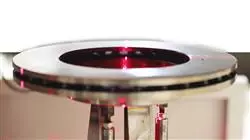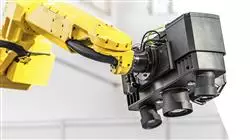University certificate
The world's largest faculty of information technology”
Description
Acquiring knowledge in quantum technologies at this time will make you a leader in programming in the near-term future”

Training a model from scratch implies having a large amount of previously catalogued information, approximately 10,000 photos of each of the types to be differentiated. This takes hours to achieve good results. In these cases, previously trained models can be used as a starting point, through the Transfer Learning resource. This postgraduate diploma examines what network models are currently available to facilitate model training using this technique.
The graduate will analyze the main use cases that exist for computer vision: classification, object detection, object identification and object tracking. For example, Google uses these algorithms to be able to search from images. Facebook, for example, uses them to automatically identify and tag people in a photo.
Quantum computing has advanced rapidly in both theory and practice in recent years and, with it, the hope of potential impact on real applications. A key area of interest and where quantum computing is proving to be most efficient is in the field of Machine Learning and its application in real proactive, predictive and prescriptive problems.
This program analyzes in which situations a quantum advantage, in the context of advanced analytics and artificial intelligence, could be achieved for the engineering world. The objective of this postgraduate diploma is to show what benefits current and future quantum technologies can provide to machine learning, focusing on algorithms that are challenging for classical digital computers, such as Kernel-based models, optimization and convolutional networks.
As it is a 100% online University Expert, the student is not conditioned by fixed schedules or the need to move to another physical location. Using a device with Internet access, you can consult the rich content that will help you acquire quantum computing techniques to reach the elite in the computer industry. All of this, at any time of the day, combining your work and personal life with your academic life at your own pace.
This training will allow you to advance in your career in a seamless way”
This postgraduate diploma in Computer Vision and Quantum Computing the most comprehensive and up-to-date scientific program on the market. The most important features include:
- The development of case studies presented by experts in Computer Vision and Quantum Computing
- The graphic, schematic, and eminently practical contents with which they are created, provide practical information on the disciplines that are essential for professional practice
- Practical exercises, where the self-assessment process can be carried out to improve learning
- Its special emphasis on innovative methodologies
- Theoretical lessons, questions to the expert, debate forums on controversial topics, and individual reflection assignments
- Content that is accessible from any fixed or portable device with an Internet connection
You are facing an emerging market where getting the right knowledge and advice is going to be paramount in order to take advantage of evolutions”
The program’s teaching staff includes professionals from the sector who contribute their work experience to this training program, as well as renowned specialists from leading societies and prestigious universities.
The multimedia content, developed with the latest educational technology, will provide professionals with situated and contextual learning, i.e., a simulated environment that will provide immersive training, designed for training oneself in real situations.
This program is designed around Problem Based Learning, whereby the professional must try to solve the different professional practice situations that arise during the academic year. For this purpose, the student will be assisted by an innovative interactive video system created by renowned and experienced experts.
You will examine which network models are currently available to facilitate the training of your model, applying the Transfer Learning technique"

You will see the benefits that current and future quantum technologies can provide to machine learning, focusing on algorithms"
Objectives
The postgraduate diploma in Computer Vision and Quantum Computing is oriented to approach the subject from a practical point of view. In this way, a sense of security is generated in the student, which will allow them to be more effective in their daily practice. The direct application of the knowledge acquired in real projects is an added professional value that very few professionals specialized in Information and Communication Technologies can offer. This is precisely what makes this Postgraduate Diploma unique in the market, since the computer scientists who take it will be unique professionals in their sector.

Immerse yourself in the most relevant technologies that will play a major role in the technological advances of the coming years"
General Objectives
- Analyze how a computer is able to identify an image
- Determine how the convolution layer works and howTransfer Learning works
- Identify the different types of algorithms mainly used in computer vision
- Demonstrate the differences between quantum computing and classical computing
- Analyze the mathematical foundations of quantum computing
- Determine the main quantum operators and develop operational quantum circuits
- Analyze the advantages of quantum computation in examples of quantum "type" problem solving
- Develop and demonstrate the advantages of quantum computing in application solving examples (games, examples, programs)
- Demonstrate the different types of projects achievable with classical Machine Learning techniques and the state of the art in quantum computing
- Develop the key concepts of quantum states as a generalization of classical probability distributions, and thus be able to describe quantum systems of many states
- Analyze how to encode classical information in quantum systems
- Determine the concept of "Kernel Methods", common in classic Machine Learning algorithms
- Develop and implement learning algorithms for classical ML models in quantum models, such as PCA, SVM, neural networks, etc
- Implement DL model learning algorithms in quantum models, such as GANs
Specific Objectives
Module 1. R&D+I.A. Computer Vision. Object Identification and Tracking
- Analyze what computer vision is
- Determine typical computer vision tasks
- Analyze, step by step, how convolution works and how Transfer Learning works
- Identify what mechanisms we have available to create modified images, from our own, to have more training data
- Compile typical tasks that can be performed with computer vision
- Examine commercial computer vision use cases
Module 2. Quantum Computing A New Model of Computing
- Analyze the need for quantum computing and identify the different types of quantum computers currently available
- Specify the fundamentals of quantum computing and its characteristics
- Examine the applications of quantum computing, advantages and disadvantages
- Determine the basic fundamentals of quantum algorithms and their internal mathematics
- Examine Hilbert space of dimension 2n, n-Qubits states, quantum gates and their reversibility.
- Demonstrating Quantum Teleportation
- Analyze Deutsch's Algorithm, Shor's Algorithm and Grover's Algorithm
- Develop examples of applications with quantum algorithms
Module 3. Quantum Machine Learning The Artificial Intelligence (AI) of the Future
- Analyze quantum computing paradigms relevant to machine learning
- Examine the various ML algorithms available in quantum computing, both supervised and unsupervised
- Examinar los distintos algoritmos de ML disponibles en la computación cuántica, tanto supervisados como no supervisados
- Fundamentals of the use of the quantum Fourier transform in the integration of indicators for quantum ML models, as well as for feature selection
- Develop pure quantum algorithms for solving optimization problems
- Generate specialized knowledge on hybrid algorithms (quantum computation and classical computation) to solve learning problems
- Implementing learning algorithms on quantum computers
- Establish the current status of QML and its immediate future

Develop a highly specialized vision, which will allow you to focus on advanced technological projects"
Postgraduate Diploma in Test-Driven Design
Test-driven design (TDD) is a software design technique that focuses on writing and running automated tests before code development. Basically, it means developing an application by testing every piece of code before writing any code. This approach to software development is an important practice within the Agile methodology.
The idea behind TDD is that if you structure each step the right way, you can predict the end results of the process. With this, developers can ensure that their code works even before they are ready to write the application in its entirety. With the guidance provided by continuous testing, they can ensure that each new iteration of code is working as expected, and does not contain bugs. This allows for more efficient and cost-effective development, and integrates quality and security from the beginning of the design phase.
The TDD process begins by creating an automated test to verify the expected behavior of a piece of code. Then, enough code is written to pass the test. The automated tests are then rerun to ensure that all tests have passed successfully. If the tests pass, the new piece of code is easily integrated into the system. If not, the necessary adjustment is made to the code to make it behave correctly. The process is repeated for each major piece of code, ensuring that all functionality is validated and tested throughout the development cycle. In this way, it becomes possible to document every part of the system or application before writing a single line of code.
TDD is a software design technique aimed at testing and creating high-quality, secure code. By structuring the design process in this way, developers can ensure that their code is robust, reducing costs and the amount of time required for software development, increasing its efficiency and adaptability.







